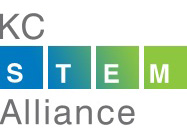24 Jun How STEAM plays a critical role in developing Colorado’s STEM-focused workforce
Much of Colorado’s economic future depends on a coordinated effort by schools, universities, governments and businesses to produce a workforce trained with an emphasis on science, technology, engineering and math — the STEM subjects — many business leaders say.
But others say that the focus on STEM shouldn’t obscure the value of education in the arts and humanities to a quality workforce.
About 55 percent of Colorado jobs will require STEM-related college education by the year 2020, the Colorado Department of Higher Education reports that. STEM jobs also pay more; career analysis website BurningGlass.com found that the average national advertised salary for entry-level STEM jobs requiring a bachelor’s degree or higher is $66,123 compared to $52,299 for non-STEM jobs.
And while many local business leaders and college officials try to ensure high school grads enter those fields, others are concerned that the arts and humanities are getting left behind. Training in the arts is a way of ensuring young adults develop critical thinking, communication, writing and creative-thinking skills, they argue.
“The broad way of using arts to learn gets narrowed into oral and written language,” said Rebecca Kantor, dean of the University of Colorado Denver’s School of Education & Human Development and a long-time researcher into the effects arts have on child development. “The arts become specials … and they’ve been diminished more and more because schools are feeling more pressure to spend time in STEM stuff.”
The effort to keep a focus on arts has garnered its own acronym, “STEAM,” which adds an “A” to STEM to symbolize not just the arts, but other subjects like sociology, history, psychology and anthropology, that educators believe are critical to creating well-rounded grads and employees as well.
For example, Kantor said in addition to teaching K-12 students those critical oral and and written skills — which employers have said many skilled college grads and recent hires are sometimes lacking— the “arts,” are critical in helping students develop skills-based learning that will translate into better communication and problem-solving in their careers.
“The arts and STEM are complimentary in reinforcing each other because they both require critical thinking,” Kantor said. “By removing the arts or diminishing them, we’re really restricting the opportunity for the brain to develop.”
Aaron Richmond, associate professor of human development and educational psychology at Metropolitan State University of Denver, said that STEAM represents “pushing for skills-based learning. The ‘A’ part is how we can use this skill of arts and see it in a practical, everyday life.”
But with budgets and time limited in the state’s education system, how can educators possibly focus on both at a time when producing STEM-skilled workers is crucial to the state’s economy?
Kantor said the solution lies with incorporating the arts into lessons revolving around STEM.
“We can do what we’ve done and reduce the arts and prioritize STEM, or we can look for a model that brings arts into the classroom,” Kantor said.
On the ground level, that involves educators getting creative with how they teach. Jeremy Blair, academic liaison and public engagement curator at the University of Colorado Boulder whose role is to integrate arts into college STEM-focused classrooms, said involving art-inspired activities into science or math class, for example, is key.
“If I’m in a science classroom and learning how to dissect an earthworm, I’m not learning something or how that’s applicable in the real world,” Blair said. “But if I add a connection … like creative writing … that immediately creates that connection.”
Angela Baber, STEM director of the Colorado Education Initiative (CEI), said that science is inherently creative and educators are already developing K-12’s “STEM literacy” — CEI’s own way of referring to developing STEAM-type skills in the classroom — helping kids reach conclusions, communicate effectively and collaborate so they’re prepared for real-world careers. CEI is a nonprofit that funds initiatives and promotes innovation in Colorado schools.
“We have a ton of great examples of that integrated approach to STEM…of project-based learning,” Baber said. “For example, you might have the engineering component of building bridge, and then you learn about the architectural side, the social sciences aspect … we see a lot of examples of educators doing that.”
But Blair said it goes deeper than that.
“If you implement a STEAM-type of program, it’s required that you collaborate in your school and your community,” Blair said.
Sandra Firman, director and chief curator at the CU-Boulder Art Museum, said some colleges, like CU-Boulder, are already doing that.
“University museums are often innovators,” Firman said, citing an example where classes from the School of Medicine take a field trip to the University museum to study art works as part of the curriculum. “That can be transferred to gaining the skills to look at things more closely and diagnosing better,” as a doctor, for example.
George Burmeister, president of Colorado Energy Group — a Boulder-based energy planning consulting firm — said the kinds of grads that integrated approach can produce are treasured in the state’s clean energy movement.
“Whether it is work performed at the world-class National Renewable Energy Laboratory (NREL) or at one of hundreds of small, local NGOs like the Alliance for a Sustainable Colorado, a multidisciplinary background really helps with integration and faster implementation times,” Burmeister said.
Burmeister, an environmental studies graduate of Trinity University in San Antonio, said the University emphasized collaboration via shared buildings, shared computers, and shared rooms with joint projects that forced the integration and overlap of STEM and liberal arts subject areas.
“By teaching students how to think critically, liberal arts institutions can have a dramatic impact on STEM as their students work across STEM areas,” Burmeister said.
Story by Caitlin Hendee, Denver Business Journal




